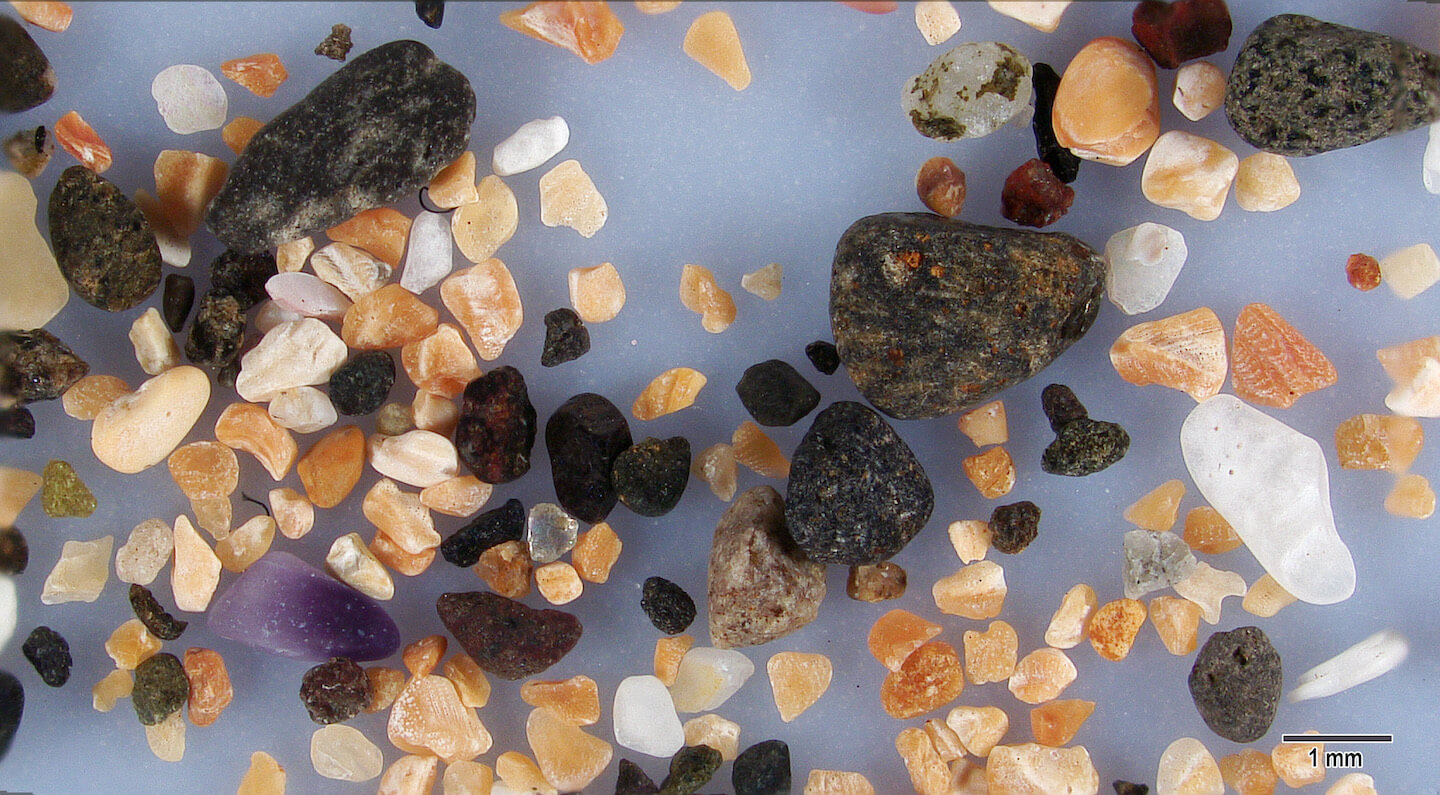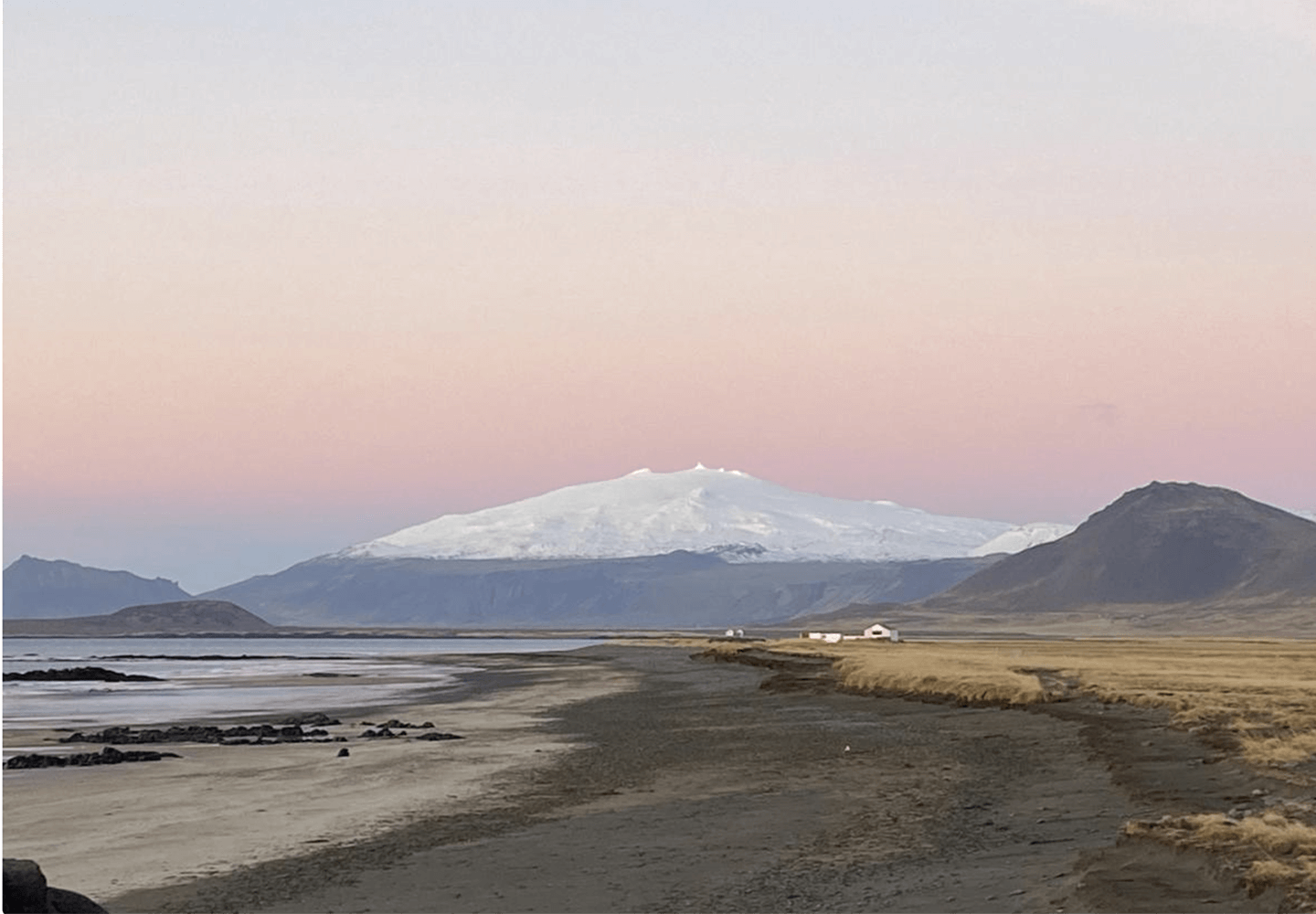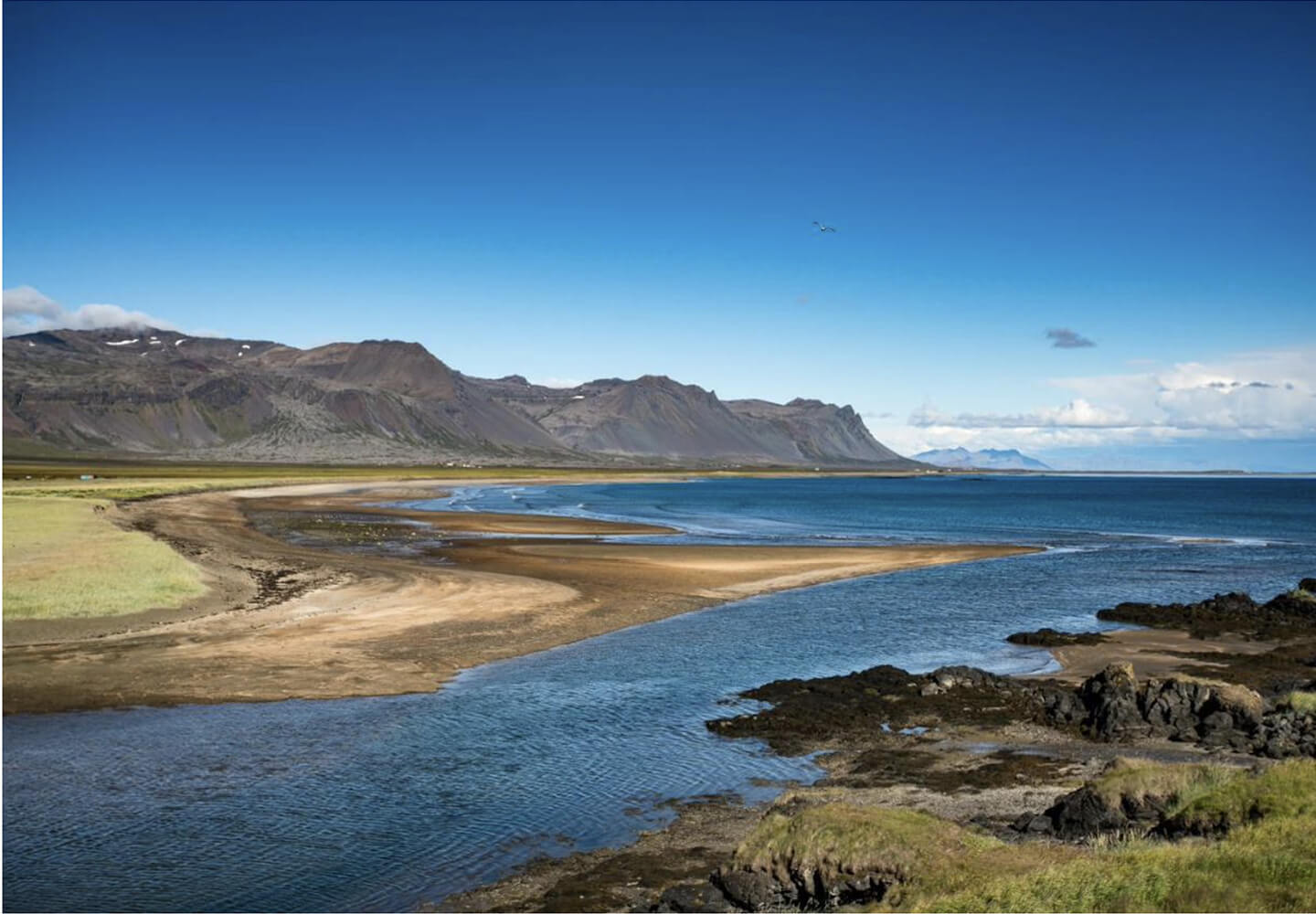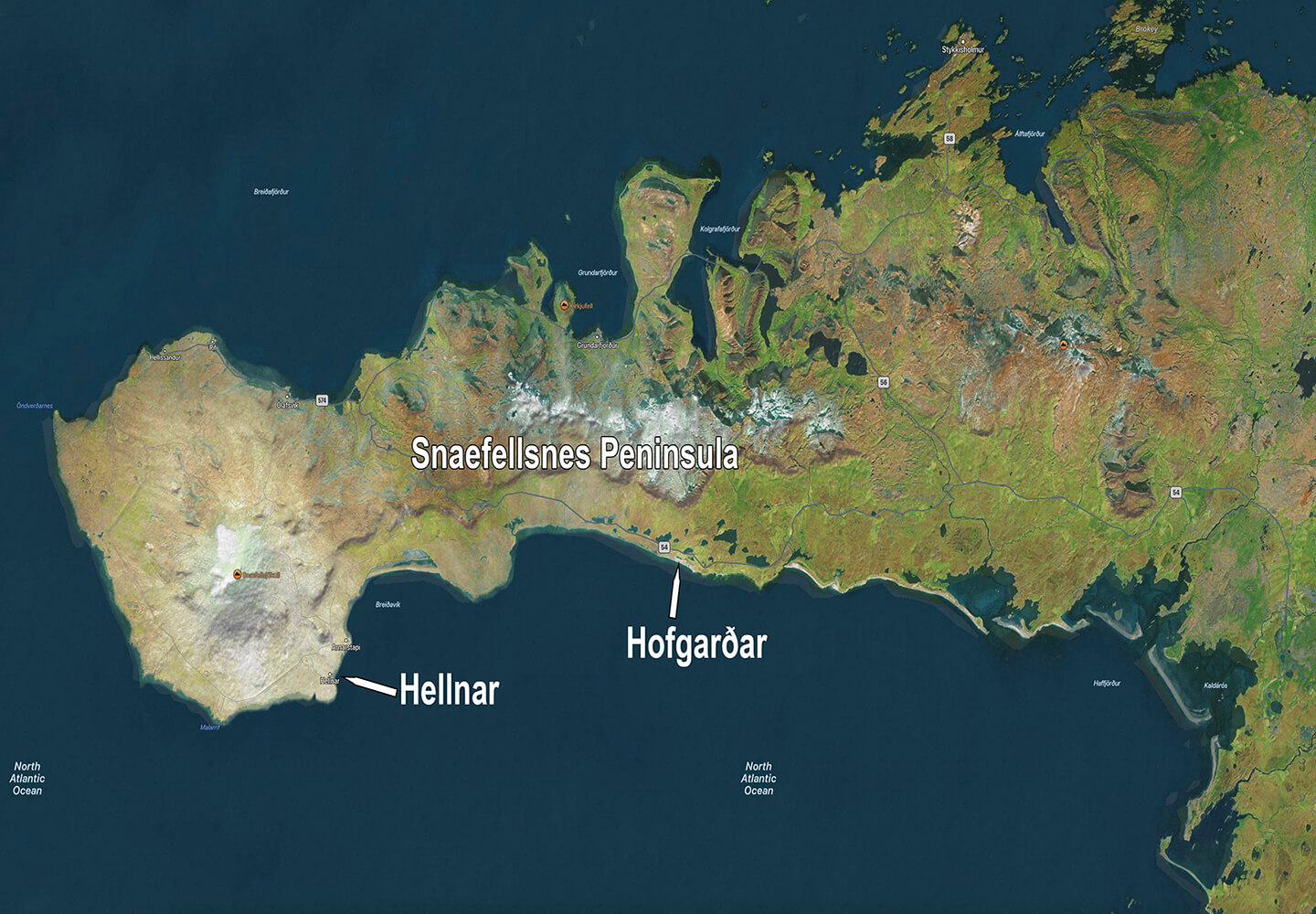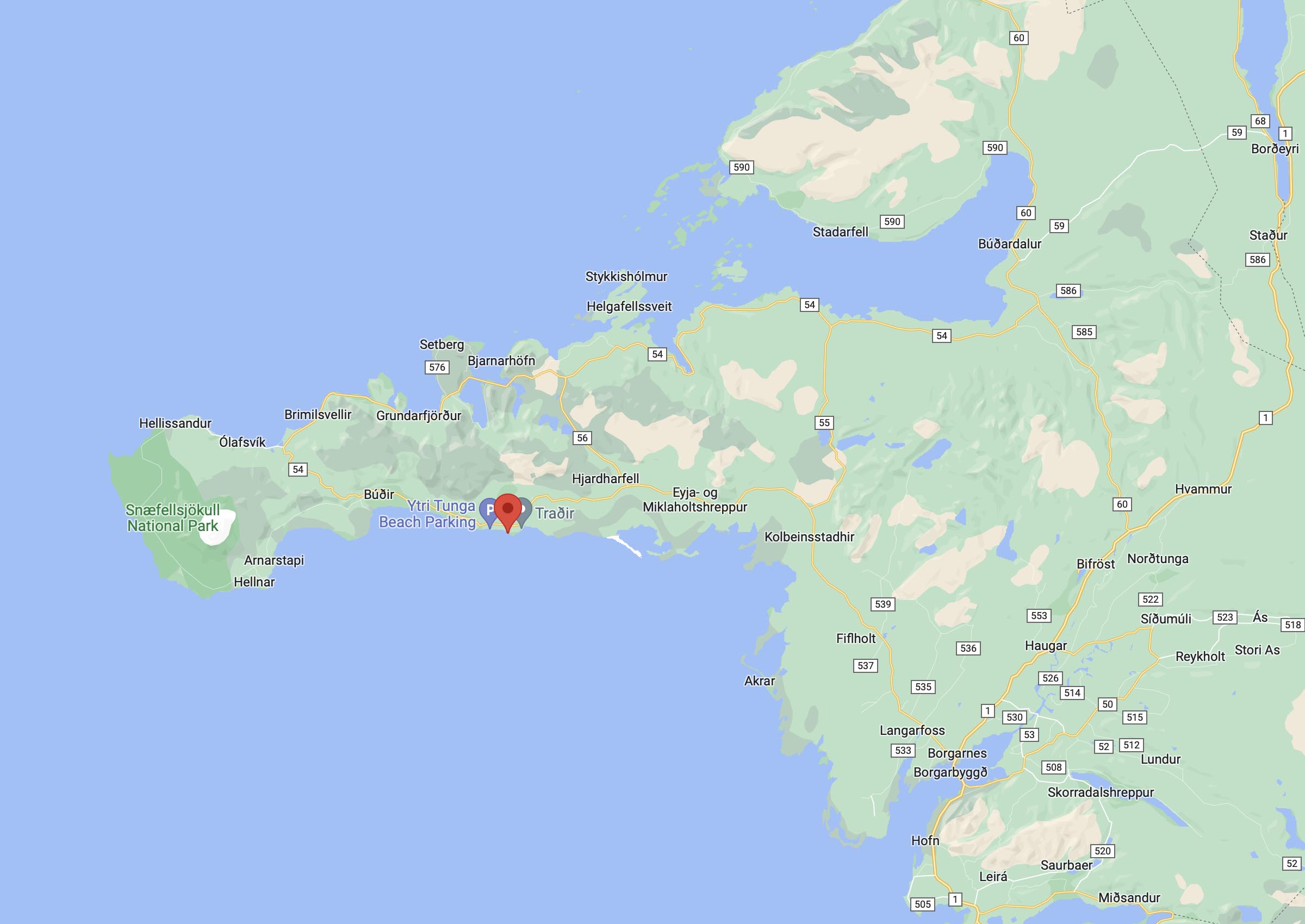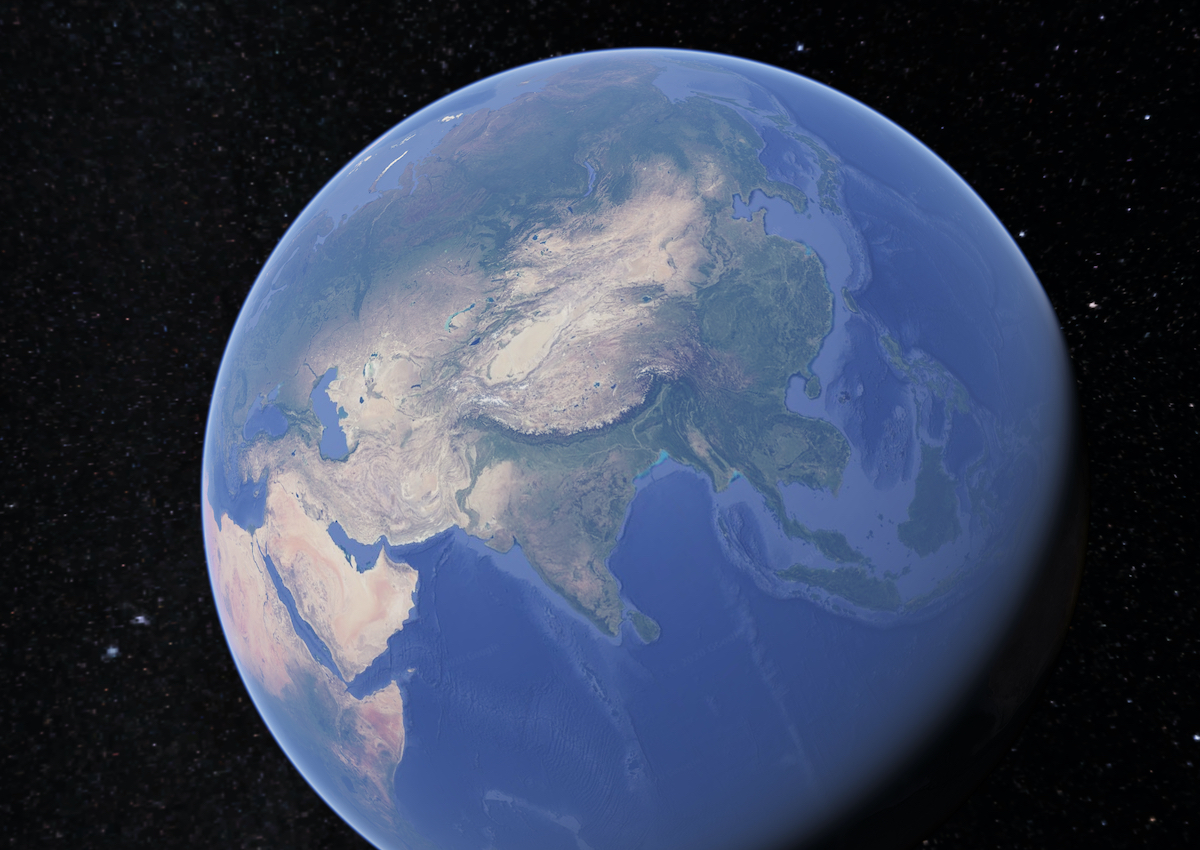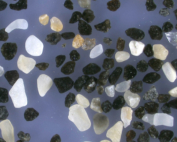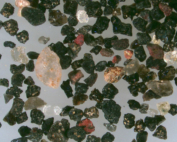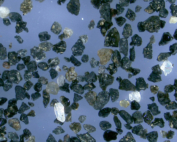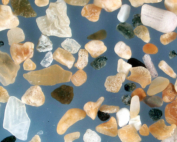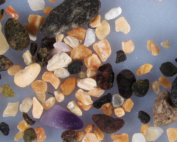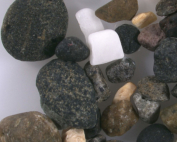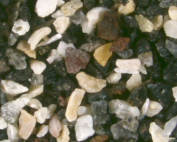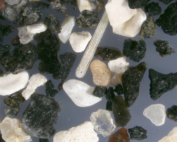Geographic Overview
The Snaefellsnes Peninsula is known for incredibly beautiful and dramatic landscapes and incorporates a variety of natural elements considered representative of Iceland’s uniquerly diverse geology, including snow-capped Snaefellsjökull glacier.
Sand Gallery
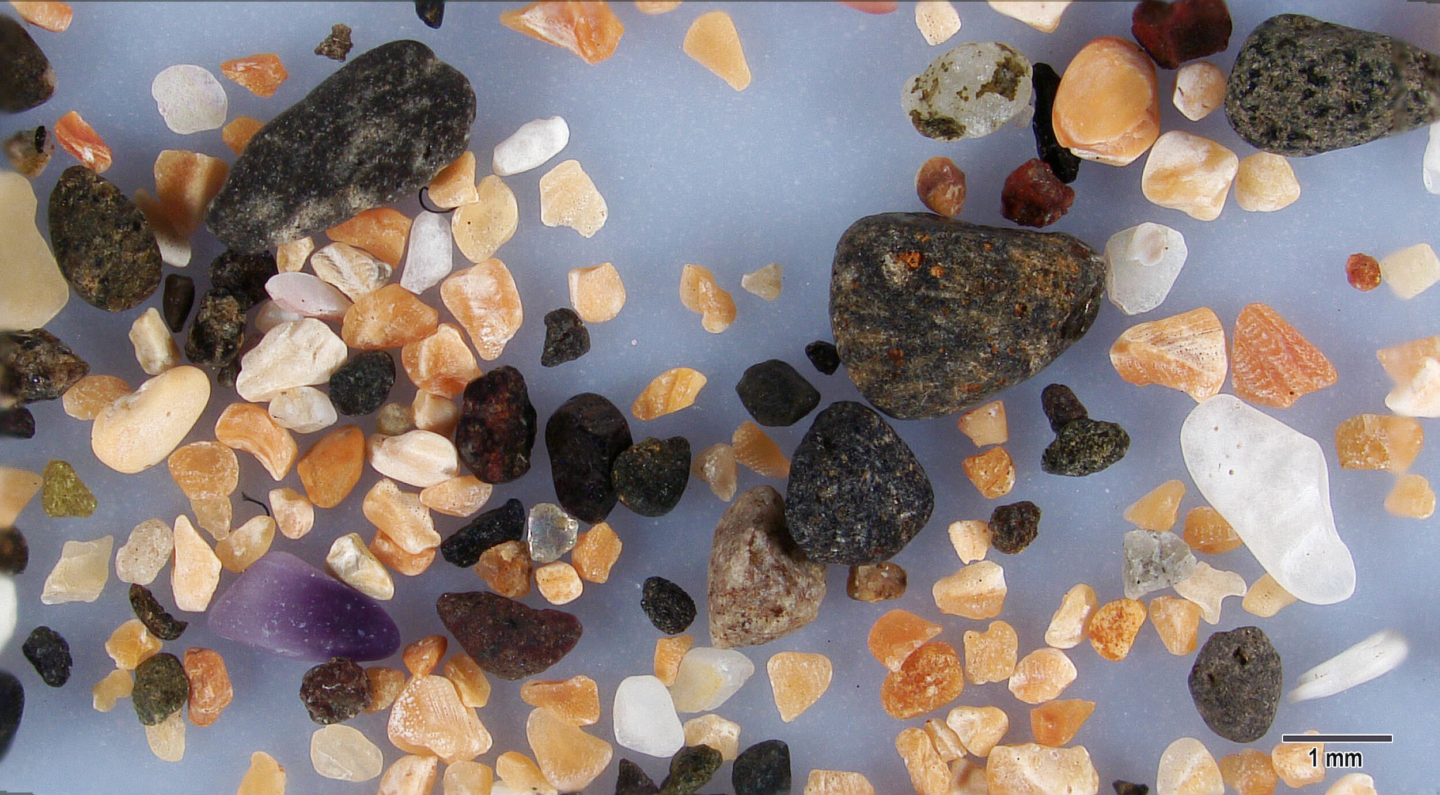
Large and small sand grains are a mixture of dark igneous mineral rocks and white, tan and occasional purple biogenic shell fragments of marine organisms. It is noted that both the rock fragments and shell grains have relatively smooth edges from long exposure to wave action.

Predominantly white and tan shell grains admixed with black and dark gray volcanic grains with a porphyritic texture comprise this specimen.
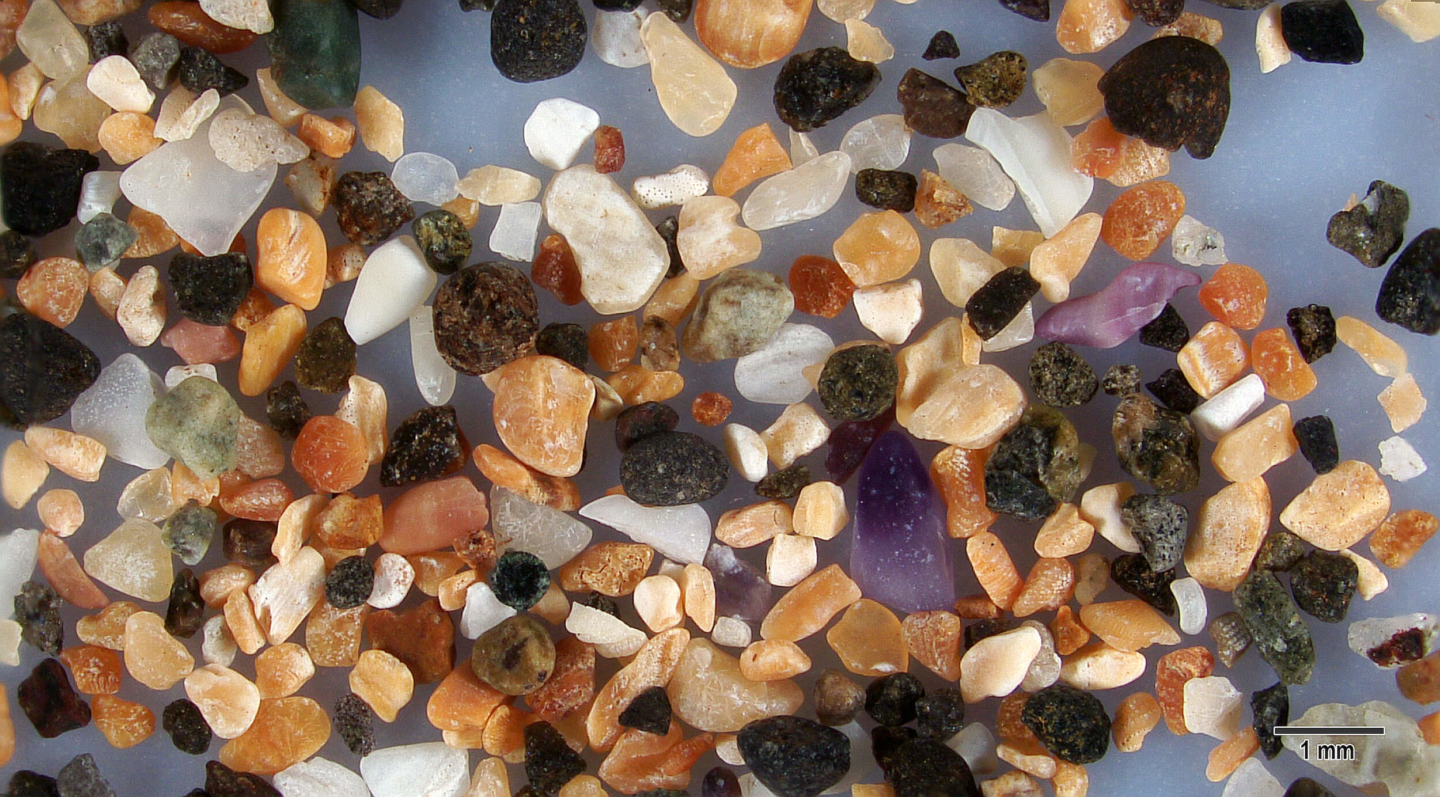
Purple, reddish-brown, tan and white shell fragments constitute the majority of this sand sample with smaller dark sand grains of volcanic origin.
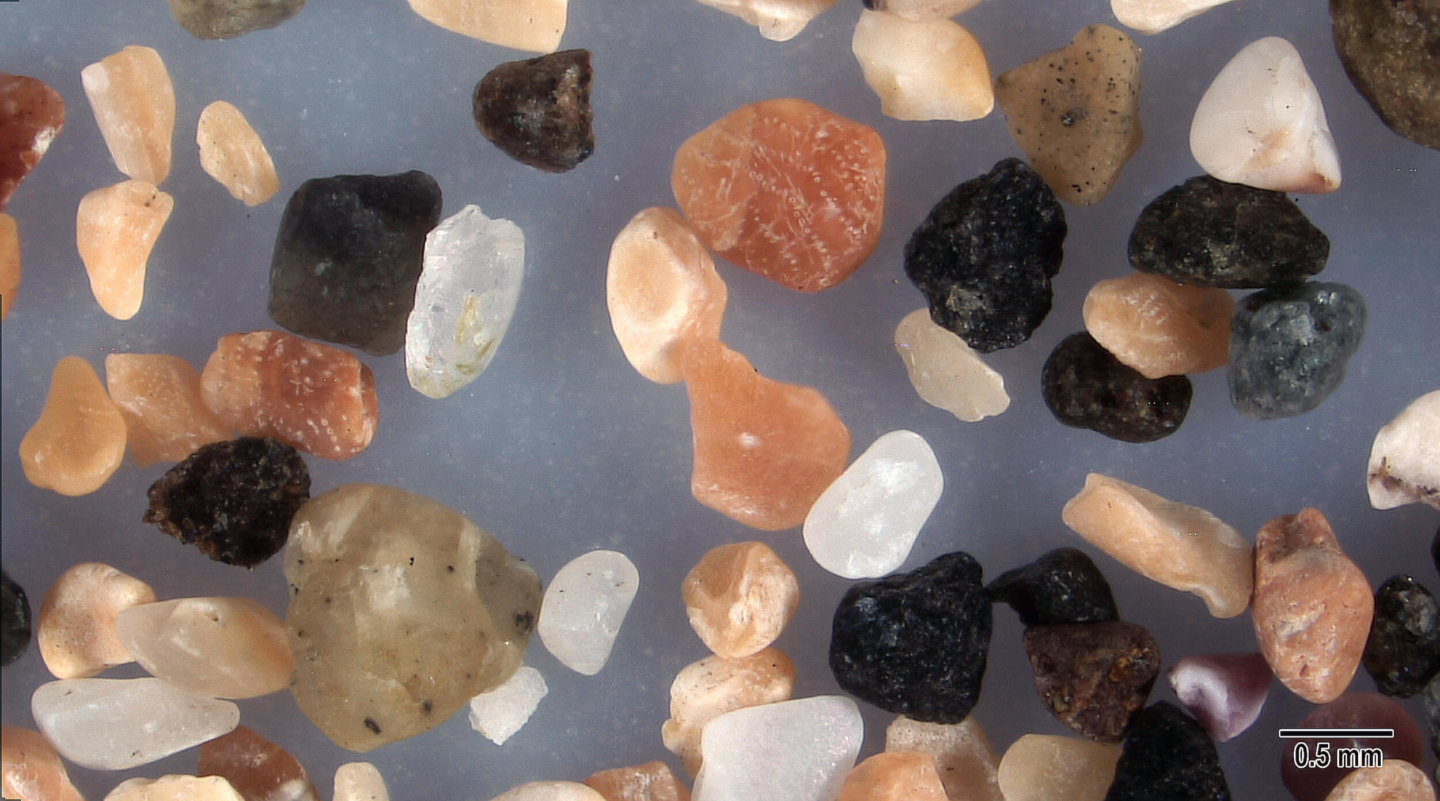
This higher magnification of beach sand is a mixture of biogenic sand grains representing smoothly worn shell fragments admixed with dark grains of basaltic origin.
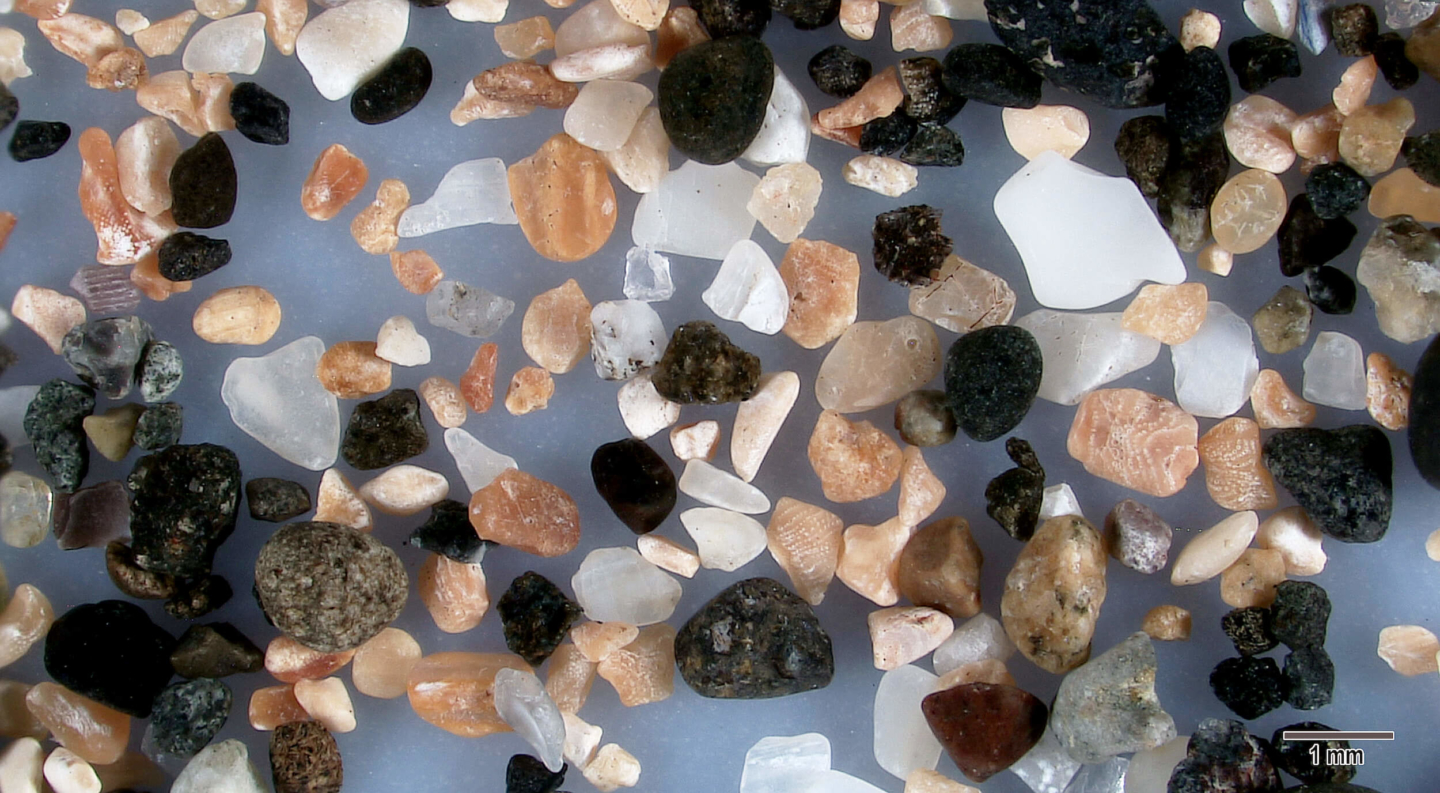
White and tan sand grains of marine shells show worn linear groves while gray and dark grains have a mottled porphyritic appearance due to presence of embedded phenocrysts.
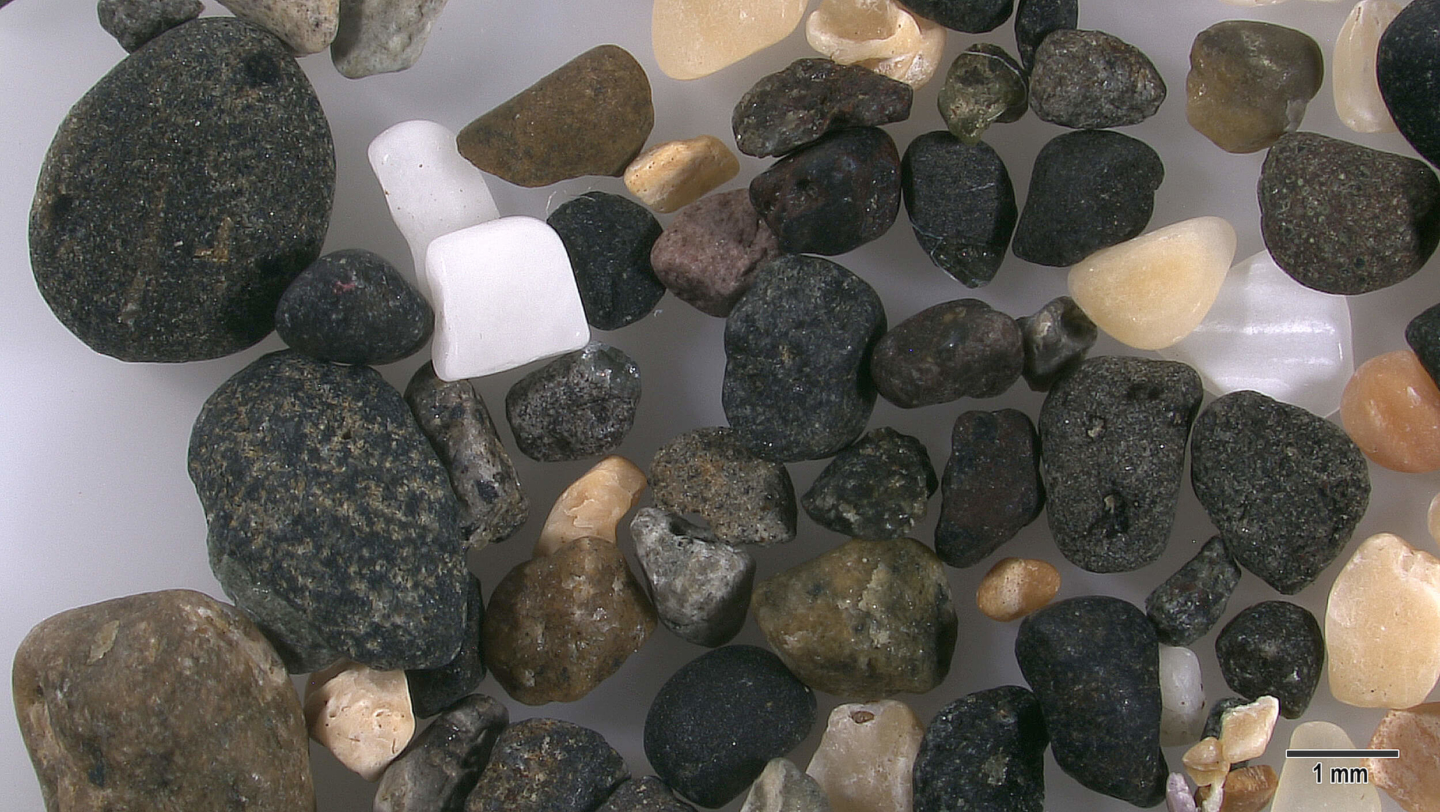
Larger sand grains in this sample represent smoothly worn basaltic igneous rock. A few white and tan grains are smoothly worn fragments of shells.

